As was the case in June 1982, people of the United States need to send a collective signal that they will not tolerate policies that lead toward nuclear war.
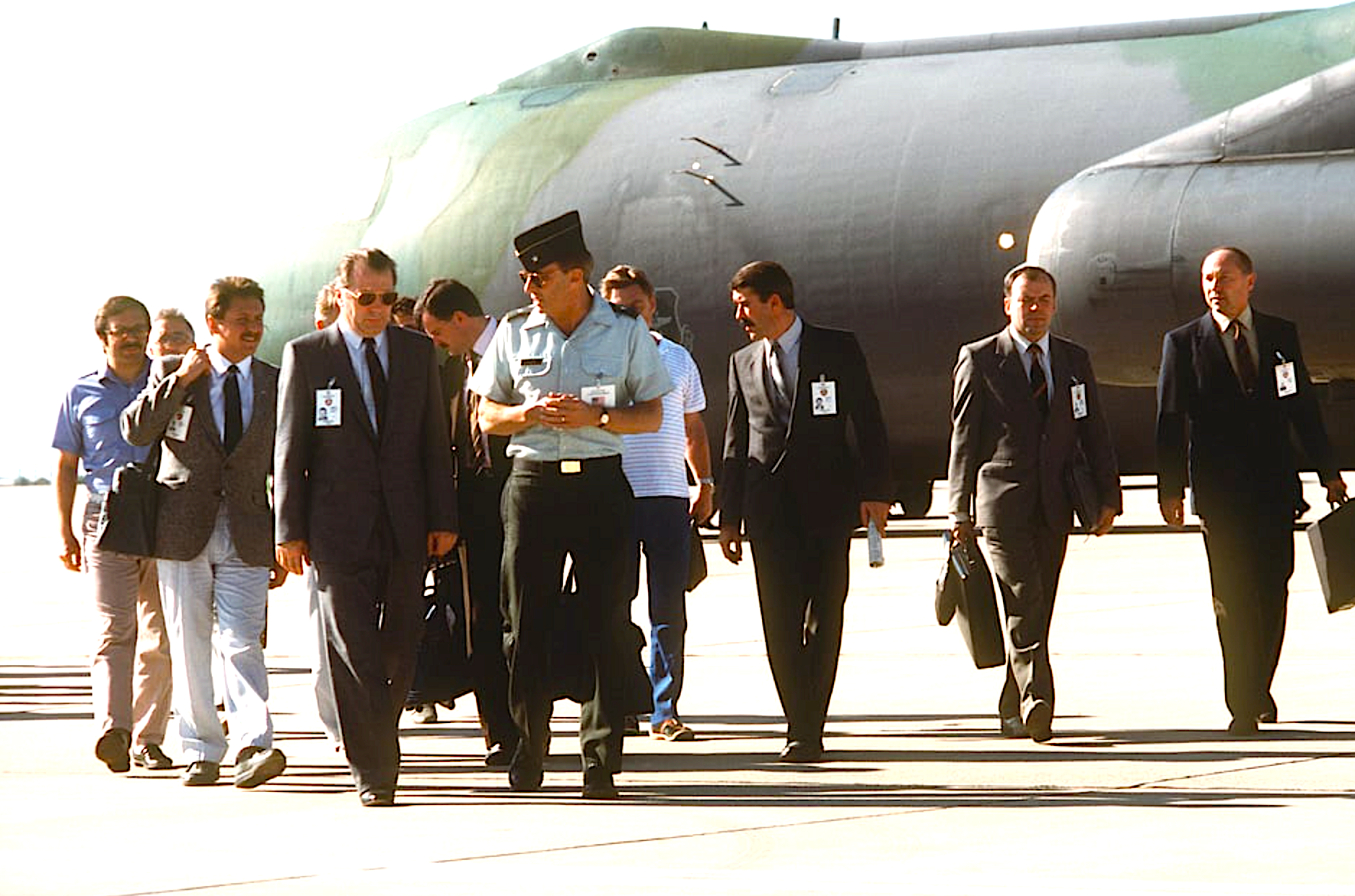
Oct. 18, 1988: Roland LaJoie, director of the U.S. On-Site Inspection Agency, leads a delegation of Soviet inspectors who had come to the Davis-Monthan Air Force Base in Arizona to monitor the destruction of ground-launched cruise missile weapon systems in the first round of reductions mandated by the Intermediate Range Nuclear Forces Treaty. (U.S. National Archives, Public domain)
By Scott Ritter
Special to Consortium News
On July 1 the Russian delegation to the Vienna Negotiations on Military Security and Arms Control organized a round table on “The Transformation of the World Order in the context of the Ukrainian Crisis.” This article is derived from the author’s presentation there.
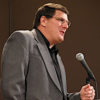 Reflecting on my participation on July 1 in the Russian-hosted forum in Vienna on the ongoing transformation of the world order, I was struck by the words of Ambassador Alexander Lukashevich, the permanent representative of the Russian Federation to the Organization for Security and Co-operation in Europe (OSCE).
Reflecting on my participation on July 1 in the Russian-hosted forum in Vienna on the ongoing transformation of the world order, I was struck by the words of Ambassador Alexander Lukashevich, the permanent representative of the Russian Federation to the Organization for Security and Co-operation in Europe (OSCE).
The ambassador told a very personal story when he took part in the Istanbul summit back in November 1999 as a junior diplomat in the delegation he now heads. There, despite tensions that existed between the United States/NATO and the Russian Federation over NATO’s then bombing of Serbia, OSCE leaders, through a process of dialogue, adopted three foundational documents that served as the framework for European security for the next two decades.
These were the Charter for European Security; the Agreement on Adaptation of the Treaty on Conventional Armed Forces in Europe; and the Istanbul Summit Declaration.
The Charter for European Security reaffirmed the commitment to a free, democratic and integrated Europe as defined by the geographic and political boundaries set forth by the territories encompassed by the OSCE, which coexisted in peace, with their respective individuals and communities enjoying freedom, prosperity and security.
The Agreement on Adaptation of the Treaty on Conventional Armed Forces in Europe (CFE) served to modify the existing CFE Treaty to consider the disintegration of the Soviet Union and the Warsaw Pact; the unification of Germany; and the expansion of NATO, all with the goal of facilitating equitable security and stability for all parties to the treaty.
Finally, the Istanbul Summit Declaration outlined the shared vision for European security and cooperation, emphasizing strengthening cooperation between the OSCE and other international organizations, enhancement of OSCE peacekeeping efforts, and expansion of OSCE-backed police activities designed to maintain the rule of law.
Ambassador Lukashevich lamented that the conflict in Ukraine, beginning with the 2014 Maidan coup that saw Ukrainian President Viktor Yanukovich ousted by U.S. and E.U.-backed Ukrainian nationalists, has undermined and destroyed all three of the Istanbul Summits crowning achievements.
INF
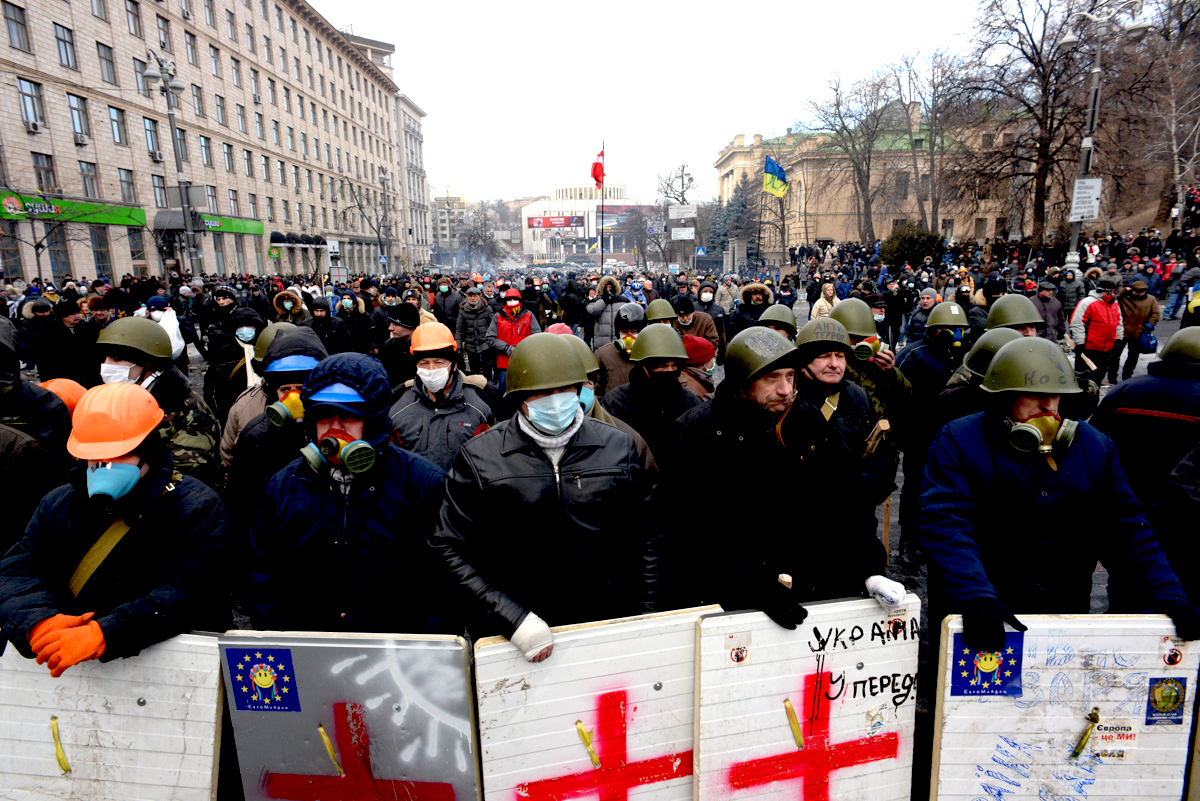
Helmeted protesters face off against police on Dynamivska Street during the Maidan uprising in Kiev, Jan 20, 2014. (Mstyslav Chernov, Wikimedia Commons, CC BY-SA 3.0)
The OSCE, working at the behest of NATO, used the Minsk Accords to further the expansion of NATO, instead of brokering peace in Ukraine. Today, NATO is engaged in a war with Russia using Ukraine as its proxy. In short, the very processes of peace and security Lukashevich said he’d worked so hard to create and implement back in 1999 were “melting before my eyes.”
I had been involved in a process of foundational importance to European security — the implementation of the Intermediate Nuclear Forces (INF) Treaty. The INF Treaty was signed by President Ronald Reagan and the General Secretary of the Communist Party of the Soviet Union Mikhail Gorbachev on Dec. 8, 1987.
In February 1988 I was one of the first military officers assigned to the newly created On-Site Inspection Agency (OSIA), created by the U.S. Department of Defense to implement the INF Treaty.
In June 1988 I was dispatched to the Soviet Union as part of an advanced party of inspectors to install a multi-million-dollar monitoring installation outside the gates of a Soviet missile factory in the city of Votkinsk, some 750 miles east of Moscow in the foothills of the Ural Mountains.
For the next two years I worked in the company of my fellow American inspectors, side-by-side with our newfound Soviet colleagues, to implement a treaty which, without our mutual commitment to making the world a safer place through disarmament, would most likely have failed in the face of deep-seated opposition in both the U.S. and Soviet Union (you can read about my experiences in my book, Disarmament in the Time of Perestroika.)
Square One

Gorbachev and Reagan signing the INF Treaty in the White House in 1987. (White House Photographic Office – National Archives and Records Administration, Wikimedia Commons, Public domain)
On June 28 last month, a mere three days before the Russian round table in Vienna, Russian President Vladimir Putin announced that Russia was going to resume production of short- and intermediate-range missiles — the very weapons myself and my fellow American and Soviet inspectors had worked so hard to eliminate. Putin said he would weigh their potential deployment in Europe and elsewhere to offset similar deployments by the United States of intermediate-range missiles in Europe and the Pacific.
Putin was referring to the deployment by the U.S. of Mk 70 containerized missile launchers capable of firing the SM-6 “Typhon” dual-capability missile as well as the Tomahawk ground-launched cruise missile. The SM-6 has a range of under 310 miles, making it compliant under the terms of the INF Treaty, the Tomahawk’s range of 1,800 miles makes it an INF-capable system.
The United States withdrew from the INF Treaty in 2019, during the presidency of Donald Trump. Russia, however, indicated that it would not either produce or deploy INF-capable missiles (despite being accused by the U.S. of doing just that in justifying its decision to withdraw from the landmark arms control agreement) so long as the U.S. did not introduce them into Europe.
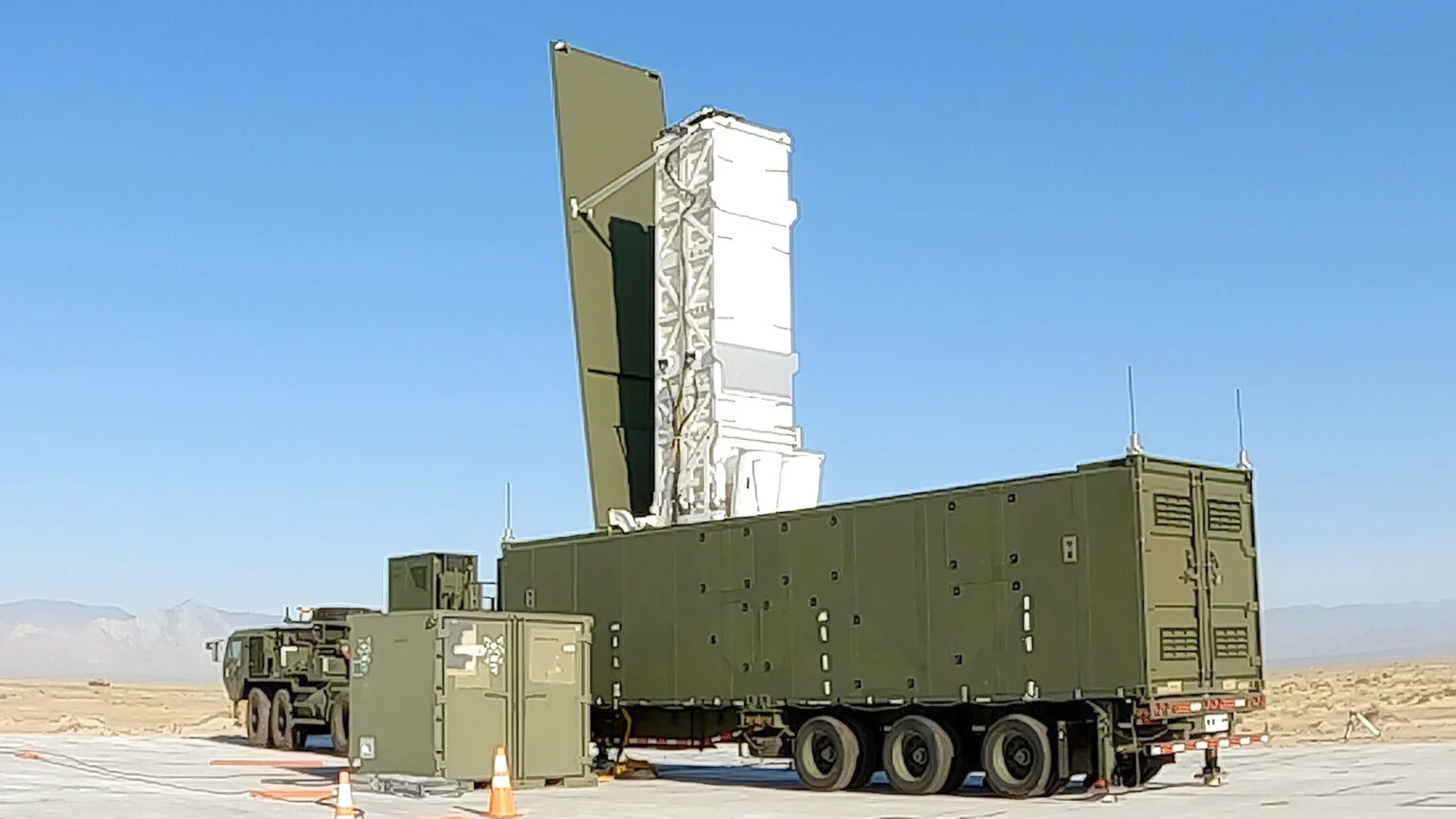
U.S. Army Typhon medium-range capability missile system. (US Army, Wikimedia Commons, Public domain)
In September 2023, the U.S. deployed two Mk 70 launchers onto the soil of Denmark as part of NATO military exercises. And in May of 2024 the U.S. likewise deployed the Mk 70 launcher on the soil of the Philippines. These actions prompted Putin’s response.
In short, we have literally gone back to square one when it comes to arms control and nuclear disarmament — to a time when Cold War politics nearly brought the U.S. and Russia to the edge of the nuclear abyss.
That is where we stand today.
Like Ambassador Lukashevich, I am literally watching my life’s work melt before my eyes.
The difference between now and then is stark. Four decades ago, we had an engaged public, and diplomats who talked to one another.
June 12 marked the 42nd anniversary of the million-person march in Central Park against nuclear war and for nuclear disarmament.
The political pressure created by this event resonated into the halls of power.
‘Walk in the Woods’
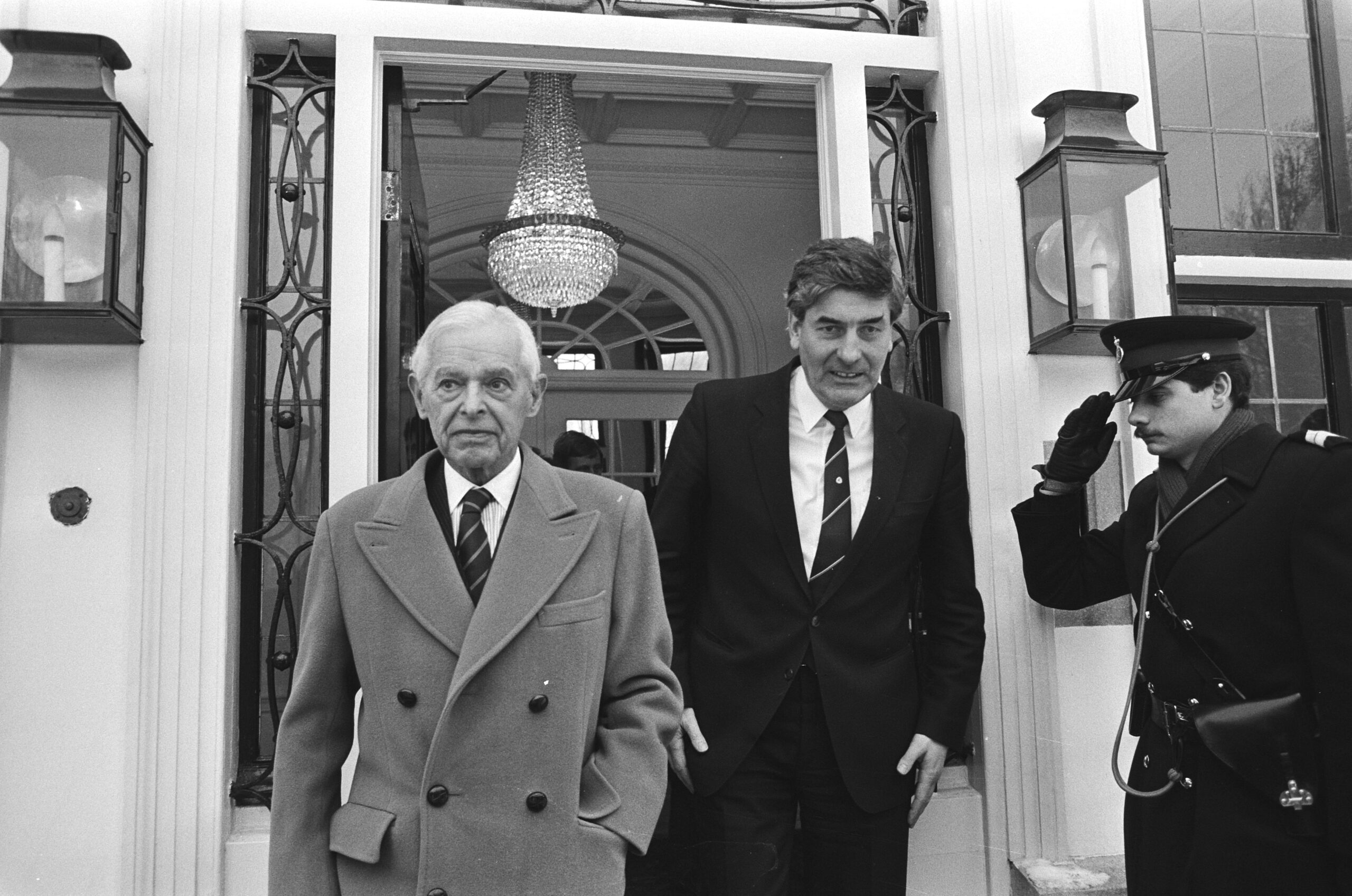
Nitze, left, visiting The Hague in January 1985 while serving as U.S. arms control adviser. (Rob Croes/Anefo, CC0, Wikimedia Commons)
July 16 will mark the 42nd anniversary of the famous “Walk in the Woods” conducted by Paul Nitze and Yuli Kvitsinsky, respectively the U.S. and Soviet lead negotiators for INF talks that, at the time, were stymied.
Faced with a calcified recalcitrance on the part of U.S. hardliners, the two men took a walk in the woods outside Geneva, Switzerland, where they outlined possible ways to break the negotiation impasse.
The ideas that Nitze and Kvitsinsky came up with never came to pass — neither the U.S. nor the Soviet Union were ready to undertake such drastic actions.
But their courageous stab at diplomacy at a time when neither side was talking to the other shook free the rust that had frozen their respective sides, lubricating the machinery of diplomacy, and set in motion the processes that led to Reagan and Gorbachev signing the INF Treaty some five and a half years later.
The key take-away from the Nitze-Kvitsinsky “Walk in the Woods” was that, when it comes to meaningful arms control, success is not immediate. The process of arms control must be seen in the long term.
It was also clear that fear fueled consideration of positive outcomes that eventually led to an equitable solution in the form of the INF Treaty.
There is no doubt in my mind that within the ranks of the Russian and U.S. diplomatic corps today are two men possessed of the vision and courage of Paul Nitze and Yuli Kvitsinsky who can, if given the opportunity, recreate the magic of the “Walk in the Woods.” That magic helped create the conditions for negotiations that helped pull the U.S. and Soviet Union from the nuclear abyss more than four decades ago.
But two hurdles must be crossed first. It is difficult to imagine a U.S. and Russian diplomat walking and talking today when, as Professor Sergey Markedonev, a fellow participant at the Vienna round table pointed out, official U.S. policy precludes even shaking hands with Russian diplomats.
It’s Up to the American People
To cross that bridge the U.S. government needs a signal from the American people that such behavior is not acceptable.
We need a modern-day version of the June 1982 Central Park million-person rally in support of nuclear disarmament and arms control and against nuclear war.
America has an election coming up in November where issues of our collective existential survival as a people and nation are on the line.
There is no more existential issue than that of nuclear war.
As was the case in June 1982, we, the people of the United States, need to send a collective signal to all who seek to represent us in the highest office of the land, that we will not tolerate policies that lead toward nuclear war.
That we insist on policies that promote nuclear disarmament and arms control.
That we demand that our diplomats begin talking with their Russian counterparts.
I’m tired of watching my life’s work melt before my very eyes.
It’s time to rebuild the foundations of our collective survival.
To make mainstream the cause of disarmament that once saved us from nuclear Armageddon.
Scott Ritter is a former U.S. Marine Corps intelligence officer who served in the former Soviet Union implementing arms control treaties, in the Persian Gulf during Operation Desert Storm and in Iraq overseeing the disarmament of WMD. His most recent book is Disarmament in the Time of Perestroika, published by Clarity Press.
The views expressed are solely those of the author and may or may not reflect those of Consortium News.
— This article has been amended with the correct date of the anti-nuclear war march in Central Park; it was June 12 (not June 24).

Demo was June 12
thank you tremendously, mr. ritter!
it must be quite bitter to see one’s life’s work
melting before one’s eyes, but at least you know
that you and your allies did the right things.
they still are. no matter what.
you and all those who work towards lasting peace
show us that reason, sanity, truthfulness, respect
– instead of pure disdain – for our opponents exist.
was it the russian foreign minister who recently said:
“we do not feel an ounce of trust!”, referring to US-RU
‘relations’ these days?
… as to mass movements in protest against the
war machinery and its indefatigable operators:
the great noam chomsky reminded me that it took about
seven years for the movement against the vietnam war to
get off the ground …
at least there are movements like
“no to NATO!”, CODE PINK and many others
as platforms to voice our discontent – although
in the meantime, ‘the establishment’ does everything
to discourage protest and to discredit and criminalize
almost everyone who does. in the US – and in europe.
[my EU country gets us ready & prepared for war these days.
soon, madly expensive and deadly ‘dark eagle’ hypersonic
bombers will be stationed on my country’s soil as well.]
let us not forget the two russian soldiers who were cool-headed,
courageous, clairvoyant enough to prevent nuclear wars, twice:
– wassili archipow in 1962,
– stanislav petrow in 1983.
jeffrey sachs recently reminded us that the doomsday clock
stands at 90 seconds before 00:00, for the first time ever …
will we manage to prevent mankind’s extinction? no idea.
many civilizations died bc they became insatiably greedy,
depleted and destroyed the resources they needed to survive.
by the way, i would not mind seeing cornel west as potus.
The tensions between Russia and the USA kept escalating for many decades. Now, in retrospect, one understands Putin’s speech at the MSC on 10.Feb.2007 as a desperate attempt to express dissatisfaction and frustration with the US/NATO expansionist self-assertiveness. Nobody wanted to hear it. It was rather seen as a “Provocation” (“How dare he question our exceptional accomplishments of expanding Democracy?”). The policies of John McCain, the Clintons, G.H.Bush were wrong – not because they were wrong – but because they brought us here. We can blame it all on the Russians – like a narcissist, frustrated spouse would do it in a bad divorce – or like smart, educated individuals sit down and … talk … do a root cause analysis … develop corrective action plans. BUT … we need to LISTEN! The American Leadership lost its capability to LISTEN.
As you so correctly highlighted in your Mel K interview, the American Leadership listens to “Vox Populi – Vox Dei”.
As all of the WW2 “Wise Men” (Eisenhower, McNamara, Kissinger, DeGaulle, etc.) are gone and a New Generation of “Wizz Kids” (Sebastian Kurz, Saana Marin, Justin Trudeau, Kaja Kallas, Emanuel Macron, etc.) entered the Political Theatre, completely oblivious to the subject (Nuclear War), they need to be made aware that they are playing with FIRE.
The subject needs to be again elevated to the level of “Vox Populi – Vox Dei” just as in the past.
Remember: hxxps://youtu.be/wHylQRVN2Qs (I hope the Russians love their Children too!)
hxxps://youtu.be/kxJNhXG5nGM
Incredibly brave truthteller gets dragged away. Brief but absolutely unmissable clip
hxxps://youtu.be/qEsJG1Nwc98?si=HWlNT6u_rD1UuNVJ
Thank you Scott Ritter for this reminder and analysis.
Massive protests will be effective, even against our corrupt money-controlled political parties.
Let young people shame them, refuse military or federal service, and denounce corruption.
The suppression of protest demonstrations exposes the diseases of a corrupt government.
And it reveals the truth of a corrupt political system, so that it is forced to reform.
Better politicians can make headway, discussion revives, and progress is seen.
@sam f:
your appeal: “let young people shame them”
reminds me that we, the parent generation,
did not manage to shame them, could not
make them change their ways and left more
than one load to our children, and to theirs …
i’ve heard people who refused military service
decades ago say that they would not refuse now.
as to better politicians making headway:
yanis varoufakis, former greek finance minister, in his
recent book “techno feudalism” quotes frederic jameson:
“people find it easier to imagine the end of the world
than to imagine the end of capitalism.”
zillion$ are being poured into think tanks and into
other efforts to corrupt, discredit and mislead people.
still, thank you for your optimism.
after all, what else do we have …
Scott Ritter for Congress!! RUN SCOTT, RUN!!!!!!
Paul Nitze was, for many years, someone who championed nuclear weapons.
But his views gradually changed. In a 1999 opinion piece in the New York Times he wrote:
“The fact is, I see no compelling reason why we should not unilaterally get rid of our nuclear weapons. To maintain them is costly and adds nothing to our security.
I can think of no circumstances under which it would be wise for the United States to use nuclear weapons, even in retaliation for their prior use against us. What, for example, would our targets be? It is impossible to conceive of a target that could be hit without large-scale destruction of many innocent people.”
He then makes this chilling warning which we ignore at our peril:
“It is the presence of nuclear weapons that threatens our existence.”
Yes, and that is why we must act to eliminate them before they eliminate us.
“A Threat Mostly to Ourselves by Paul H. Nitze” 28 October 1999 (NYT).
SCOTT!! You have the connections and the gravitas to make this March happen. Invite Judge Nap and Co. Then CODEPINK. GREYZONE. CHRIS HEDGES. RUSSELL Brand. Invite Every peacemaker organization in America. IF YOU BUILD IT THEY WILL COME.
Yes, the fact is the military industrial profit motives are taking over our world as the last stand of the age of military protection racket for national empire that the global world society cannot afford with the entire human civilization at risk. Full spectrum dominance is not protection it is an impossibly expensive waste of all world resources as the ultimate risky business interest for profits by aggression based civilization.
“U.S. policy precludes even shaking hands with Russian diplomats. ”
That says it all.
We need more walks in the woods.
I noticed that. Incredible. Editors – is there a link for this?
Scott, thank-you for your article. Millions of “American people” could protest, could close down every highway in the country and it wouldn’t matter. US taxpayers are born into lifelong enslavement to the endless war industry. Keeping us as slaves is job #1. “The American people” have zero power. Yes, someone must stop the US, but it won’t be the “American people.” I look forward to a day when US is broken up into 3 or more parts so taxpayers are separated from the war industry. Southwest states could merge with Mexico, for example.
Susan, I think you’re not taking in what Scott wrote in detail. Scott was uniquely positioned, as part of the team physically carrying out the disarmament policy, to perceive and judge whether or not the mass march in 1982 was an important factor, and he’s saying that it was the key factor. From where he was placed, he would be able to know this, so I have to defer to his judgement. Scott is probably the most hard-nosed, realistic, anti-sentimental writer I know, not given to wishful thinking, dreaming or Kumbaya Moments to the slightest degree, so when he says that massive street protest is a key factor, I really listen to what he has to say.
David, I’m very much a Scott Ritter fan, appreciate his experience and perspective and his willingness to remain involved. I just don’t think there’s a shred of hope that US elites can be reached. First, there’s too much free taxpayer money involved. Granted it was only 125,000 people, but in April 1967 Dr. King led a march to the UN to urge UN to stop US from bombing Vietnam. This enraged the Establishment. One year later Dr. King was assassinated. Today the problem is exacerbated by the fact that the UK monarchy is US partner in endless wars and esp. vs Russia. UK monarchy clings to this association as a matter of life or death, fears it will become irrelevant without it. In 2016 Trump campaigned on normalizing relations w. Russia and reducing US foreign military intervention. Once elected, he flip flopped, became a full neocon. In Aug. 2017 congress removed all Russia matters from Trump and gave them to the Senate. Trump’s demotion was quietly mentioned at a 2018 NATO meeting. The measure had been initiated by Lindsey Graham in Jan. 2017. Soon Lindsey and Don became best pals. I believe Trump knew if he wanted to stay in politics, he’d have to surrender to Russia-hater Lindsey and enslavement of US taxpayers to weapons makers.
Thank you very much, Scott.
I agree that US withdrawal from the nuclear arms treaties is catastrophic. We need to reinstate them. However, we have two militaristic presidential candidates, one who can’t see genocide in front of his eyes and another who says Israel should finish the job.
I just think you should change the Scott Ritter list of achievements: he didn’t find WMD in Iraq, did he???
The last anti-war protest in the US occurred when college students protested across the country and look what the federal and state governments did to them. Some of the most outrageous politicians like Tom Cotton wanted their “anti-Semitism” to be listed on their records so future employers would know about it. They got punished unjustly due to the Israeli lobby.
Do you think they’ll participate in another march this Fall?
Unions have become limp appendages of the union bureaucracy. They’d be the perfect group to lead the nation but the “leaders” are owned by the same oligarchy as the political parties.
It’s clear to me the US oligarchy hold the upper hand today, including spying on Americans at the local, regional, state, and federal level. This makes it hard to even organize such a grand protest without the dreaded knock on the door. Our society has closed down immensely in the past two decades.
If you can find a way, I’m all in!
Shortly, we are going to have to decide between autocracy or social democracy (otherwise known as socialism) politically…autocracy will have governments playing nuclear brinkmanship, as we currently are doing, and socialism will have us trying to better conditions on an over loaded, over populated planet.
Which would you prefer?
I had a friend who was a simultaneous interpreter during these arms control (OSIA) negotiations. As the son of immigrants, he was fiercely loyal to the U.S. and intensely anti-Communist. He said, though, that the Soviets were totally committed to the process. They had some preparations for a worst case scenario, like old fashioned vacuum tube electronics because those would work after an atomic pulse. But since the Soviets had seen the worst of war, they were very serious about avoiding it.
And take a look at who the U.S. President was. A conservative Republican and cheerleader for capitalism. Apparently not, however, a neocon. That had to wait until Bush II.
How can this D administration and its faithful apologists NOT have a problem with Dick Cheney’s neocon acolytes running the Dept. of State?! It’s MAD!
Thank you Scott Ritter for your tremendously informative and inspiring article. Yes, we need another mass movement against nuclear proliferation. And we need to keep pressing for a change away from in the US’s incredibly provocative Ukraine policy, where our continued military support for Ukraine in the war against Russia may trigger a nuclear Armageddon.
Dear Scott
Thank you for this timely article.
Did the government return your passport?
Or did you attend the Vienna conference remotely?
Ritter’s fear about nuclear war is true and laudable, but he has faith that I do not have that the current establishment is in any way moveable. Million person protests will not work anymore. The political establishment is extreme right and further extreme right. It’s not 1984 anymore. It’s time to bring the current government down, with work stoppages and general strikes.
Socialists are organizing a protest in Washington July 24 to coincide with Israeli PM Netanyahu’s visit, but the idiotic NATO summit on July 9 is the event begging for a mass protest by any and all who fear these mad policies heading us straight for World War III and nuclear doom.
“My feelings of revulsion and foreboding about nuclear weapons had not changed an iota since 1945, and they have never left me. Since I was 14, the overriding objective of my life has been to prevent the occurrence of nuclear war.”
Daniel Ellsberg
Scott Very much appreciate your work and your courage, I look forward to your insight and discussion on various sites including of course the commentary with Judge Napolitano each week. Bless you.
Scott you did great work back in the day. Unfortunately, the two halves of the American uniparty are hell bent on hegemony and we, the people of the US, don’t actually get a vote anymore.
Scott is STILL “doing great work”! The frightened criminal children who run the USA are continuing their bullying, demonizing, silencing, censoring and threatening any successful truth-teller who reveals the filthy underbelly of the idiotic behavior of the imperialist, racist and greedy US government and ‘military industrial complex’! It is so sickening that no one listened to Eisenhower when he warned the nation about the “MIC”. We all should be grateful to Mr. Ritter, as well as Damiel Ellsberg, John Kiriakou, Ray McGovern, Col. Larry Wilkerson, Col. Douglas MacGregor, Julian Assange, and many others across ‘alternative media’ who struggle every day to get the truth out to the deeply the propagandized American (and European) people!
Many thanks Scott Ritter for your historical and present knowledge of world politics and trying to raise awareness of the dangers of ignoring them. You are my go to person when I want to know and learn more about the Gaza Genocide and israels crimes and the the predictions of the outcome of it all! Please keep awakening the SHEEPeopLE!
I believe Mr Ritter is strongly motivated to ensure his daughters (and potential future grandchildren) inherit a livable planet for the long term. He is therefore completely insane and a bad man.
Our great leaders are motivated to increase the quarterly profits of the military industrial complex, irrespective of whether humanity goes extinct after that. They are therefore totally sane and saintly figures.
War is Peace
Freedom is Slavery
Ignorance is Strength
Thanks Mr. Blair. I was reading through the comments section and was struck initially by your sentence, “He is therefore completely insane and a bad man”. It grabbed me — as like you I am a follower of Scott. A wonderful and shaking wakeup. Of course I am aware of the pseudonym. We live in a crazy time. —‘Mr. Blair’!
Thank you Scott Ritter for your good work in the past on nuclear controls. I personally get frustrated/angry/depressed about our regression in this area, so I can imagine that’s magnified 10x for people like you who spent so much time and energy working on treaties that have now been tossed aside by posturing politicians trying to look ‘tough’ to their unsophisticated/easily- duped constituents. Also, my hunch is that a lot of people are semi-consciously thinking ’Oh, the government and anti-nuke people were all worried about nukes back before 2000 and nothing happened, so I’m not going to worry about it this time.’, and they won’t get excited/interested until nuclear weapons start being used in their backyard
Thanks you scott this is eye opening for me. Thank you for you hard work and your service for our country. Allow me to save this article for momery.